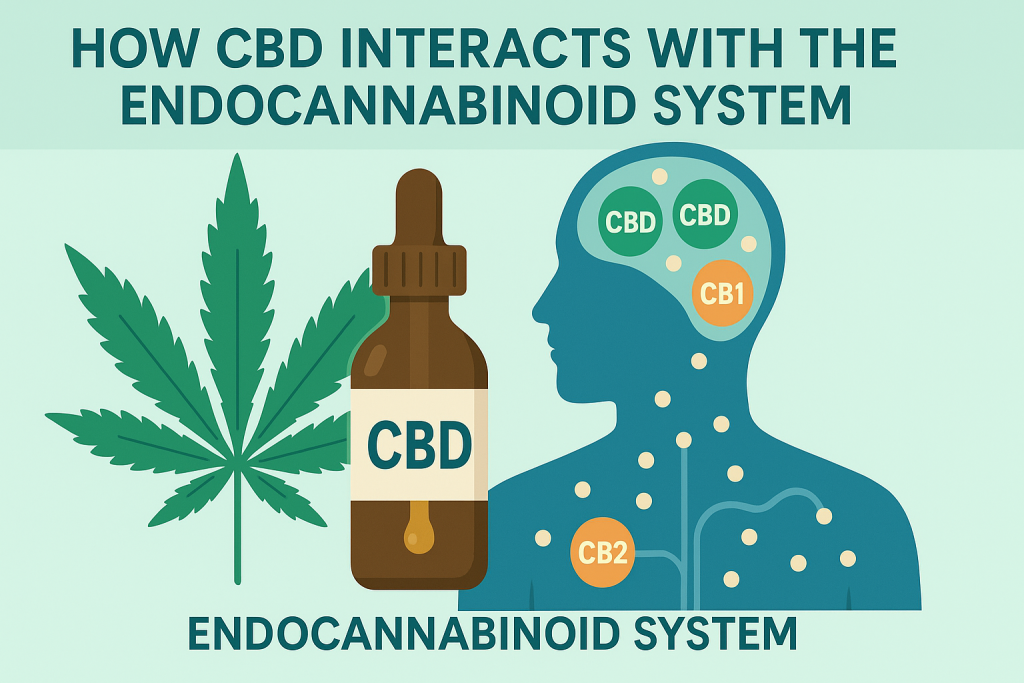CBD
How CBD Interacts with the Endocannabinoid System
As interest in natural health solutions continues to grow, CBD (cannabidiol) has emerged as one of the most talked-about compounds in the wellness world. Known for its potential to relieve stress, manage pain, improve sleep, and reduce inflammation, CBD is being researched extensively for its interaction with a critical system in the human body known as the endocannabinoid system (ECS).
But what exactly is the ECS? And how does CBD influence it to provide such a wide range of effects? Let’s explore the fascinating science behind CBD and its interaction with the endocannabinoid system.
Understanding the Endocannabinoid System (ECS)
The endocannabinoid system is a complex cell-signaling network that plays a vital role in maintaining homeostasis—the body’s internal balance across various functions such as mood, memory, immune response, pain sensation, sleep, and appetite.
The ECS is made up of three core components:
- Endocannabinoids (naturally occurring cannabinoids produced by the body)
- Cannabinoid receptors (found on the surface of cells throughout the body)
- Enzymes (that synthesize and break down endocannabinoids)
The two primary endocannabinoids identified so far are:
- Anandamide (AEA) – sometimes called the “bliss molecule”
- 2-Arachidonoylglycerol (2-AG)
These molecules bind to cannabinoid receptors to help regulate essential functions and restore balance when the body is out of sync.
Types of Cannabinoid Receptors
There are two main types of cannabinoid receptors in the ECS:
- CB1 receptors: Found primarily in the central nervous system (brain and spinal cord). These are responsible for regulating mood, pain, memory, coordination, and appetite.
- CB2 receptors: Mostly located in the peripheral nervous system, especially in immune cells. They play a key role in managing inflammation and immune responses.
Endocannabinoids and plant-derived cannabinoids (like CBD and THC) exert their effects by interacting with these receptors.
How CBD Interacts with the ECS
Unlike THC (tetrahydrocannabinol), which binds directly to CB1 receptors and produces a psychoactive “high,” CBD does not bind strongly to either CB1 or CB2 receptors. Instead, it works in more indirect and nuanced ways to influence the ECS.
Here are the primary ways CBD interacts with the endocannabinoid system:
1. Inhibiting FAAH Enzyme Activity
CBD helps increase levels of anandamide—one of the body’s natural endocannabinoids—by inhibiting the enzyme FAAH (fatty acid amide hydrolase). FAAH breaks down anandamide, so when CBD inhibits this enzyme, it results in higher anandamide levels, which can boost mood and reduce pain or anxiety.
This is one reason why CBD is believed to have antidepressant-like and anti-anxiety effects.
2. Modulating Receptor Activity
CBD doesn’t bind to CB1 or CB2 receptors with high affinity, but it can modulate their activity, making them more or less responsive to other cannabinoids. For example:
- It may weaken THC’s binding affinity to CB1 receptors, potentially reducing the psychoactive effects of THC.
- It may also influence how the receptors respond to endogenous cannabinoids like 2-AG and anandamide.
This indirect influence helps CBD promote balance within the ECS without overstimulating it.
3. Interacting with Non-ECS Receptors
Interestingly, CBD also affects receptors outside the ECS, which contributes to its therapeutic potential:
- 5-HT1A receptors (serotonin): CBD’s interaction with these receptors may explain its anxiolytic (anti-anxiety) and antidepressant properties.
- TRPV1 receptors: These are involved in pain perception and inflammation. CBD activates these receptors, which may help with chronic pain and inflammatory conditions.
- GPR55 receptors: CBD acts as an antagonist to GPR55, which may help reduce blood pressure and bone loss.
The Entourage Effect: CBD and Other Cannabinoids
In full-spectrum and broad-spectrum CBD products, CBD works alongside other cannabinoids (like CBG, CBN, and even trace THC), terpenes, and flavonoids. This combination produces what’s known as the entourage effect—a theory that all cannabis compounds work better together than in isolation.
By supporting and enhancing each other’s effects, the entourage effect helps CBD interact more efficiently with the ECS, amplifying potential health benefits.
The Importance of a Balanced ECS
When the ECS is functioning properly, it helps the body maintain homeostasis. But factors like chronic stress, poor diet, lack of sleep, or inflammation can throw it out of balance. This may lead to conditions like anxiety, insomnia, pain, and weakened immunity.
CBD may offer a natural way to support ECS health by:
- Promoting the production of endocannabinoids
- Inhibiting their breakdown
- Modulating receptor activity
- Reducing inflammation and oxidative stress
Conclusion
The interaction between CBD and the endocannabinoid system is a fascinating field of study that continues to grow. While CBD doesn’t bind directly to ECS receptors, it plays a vital role in supporting this critical regulatory system. By enhancing endocannabinoid levels, modulating receptor responses, and interacting with other important neurotransmitter systems, CBD can help the body maintain equilibrium in times of stress, pain, or imbalance.
Whether you’re using CBD for anxiety, sleep, inflammation, or general wellness, understanding its relationship with the ECS provides a clearer picture of how it works—and why it holds such promise for natural healing.

